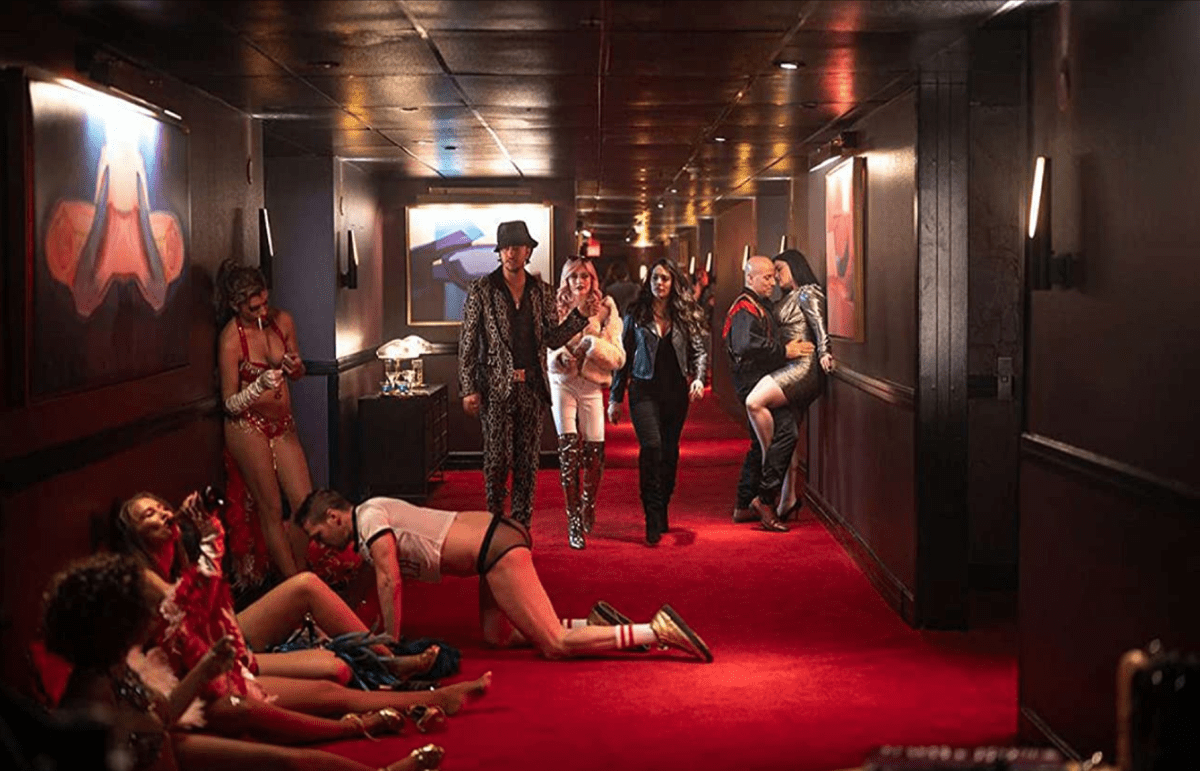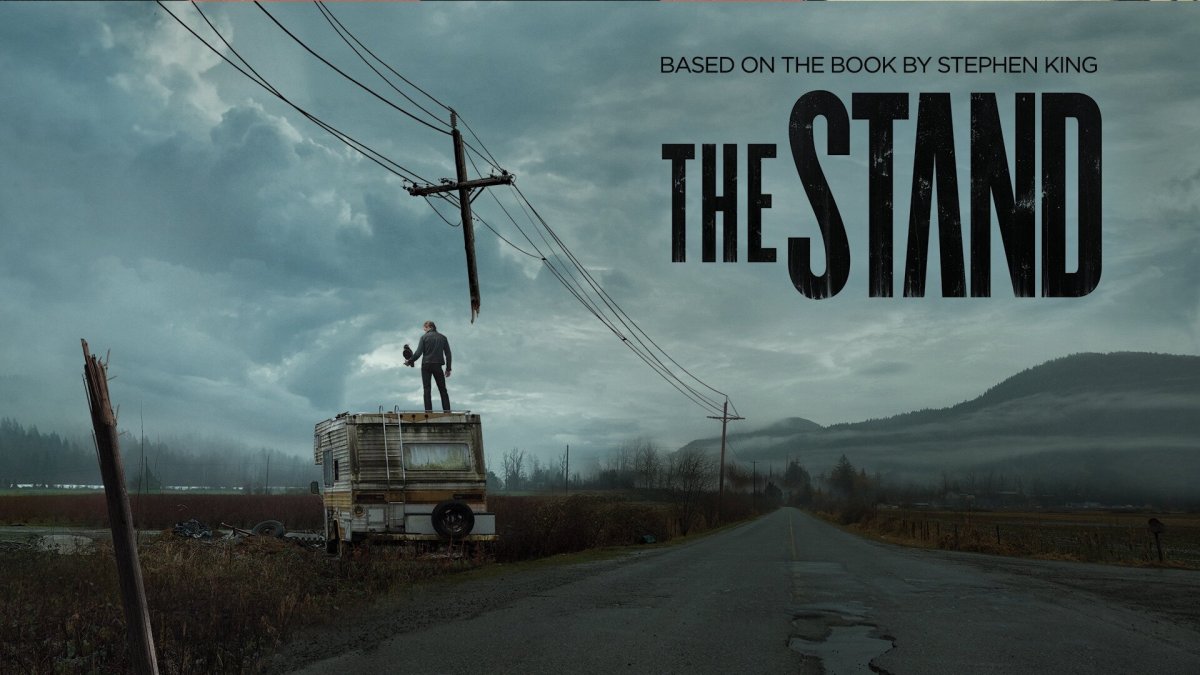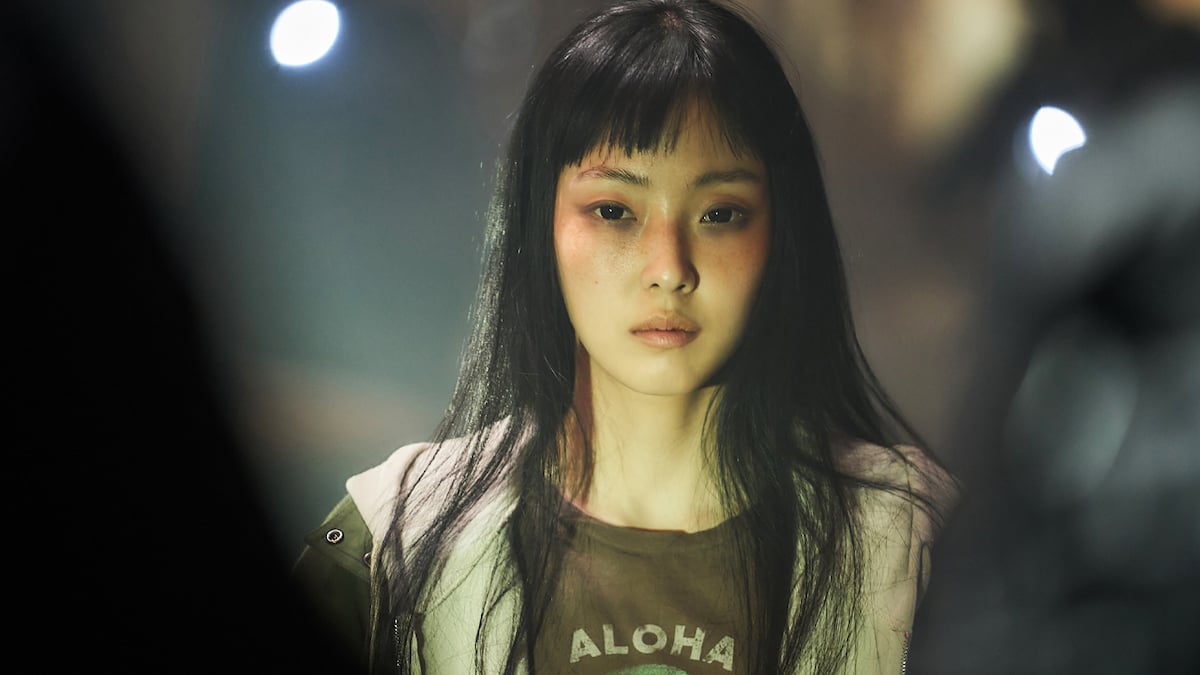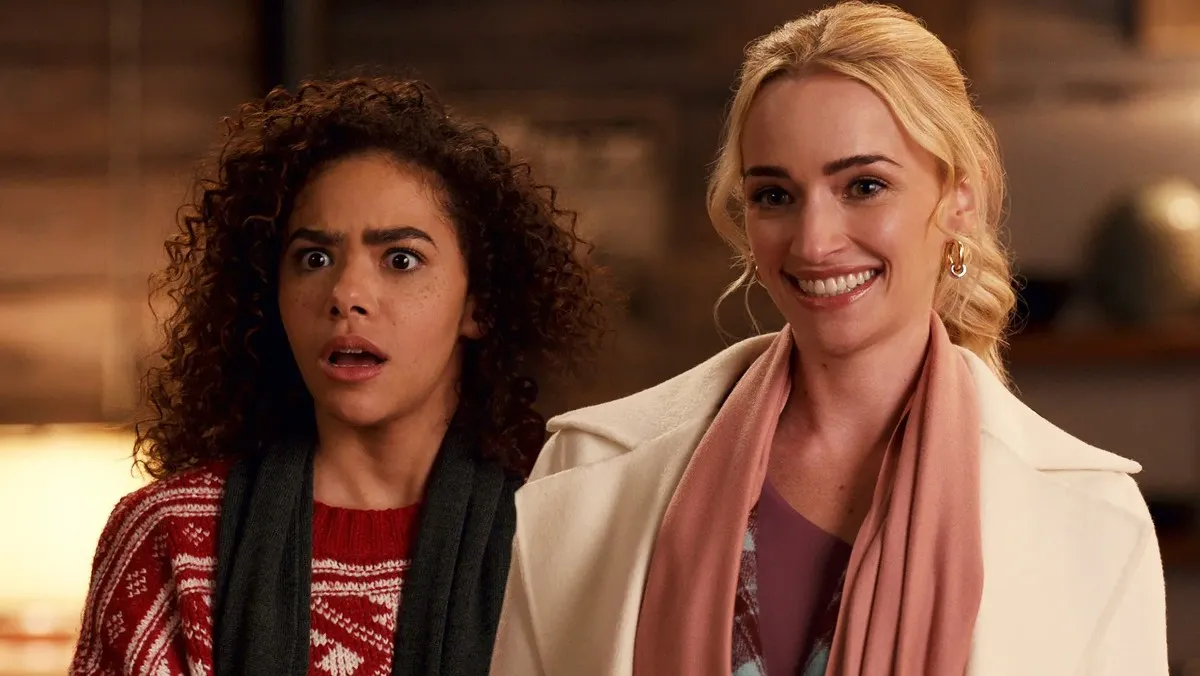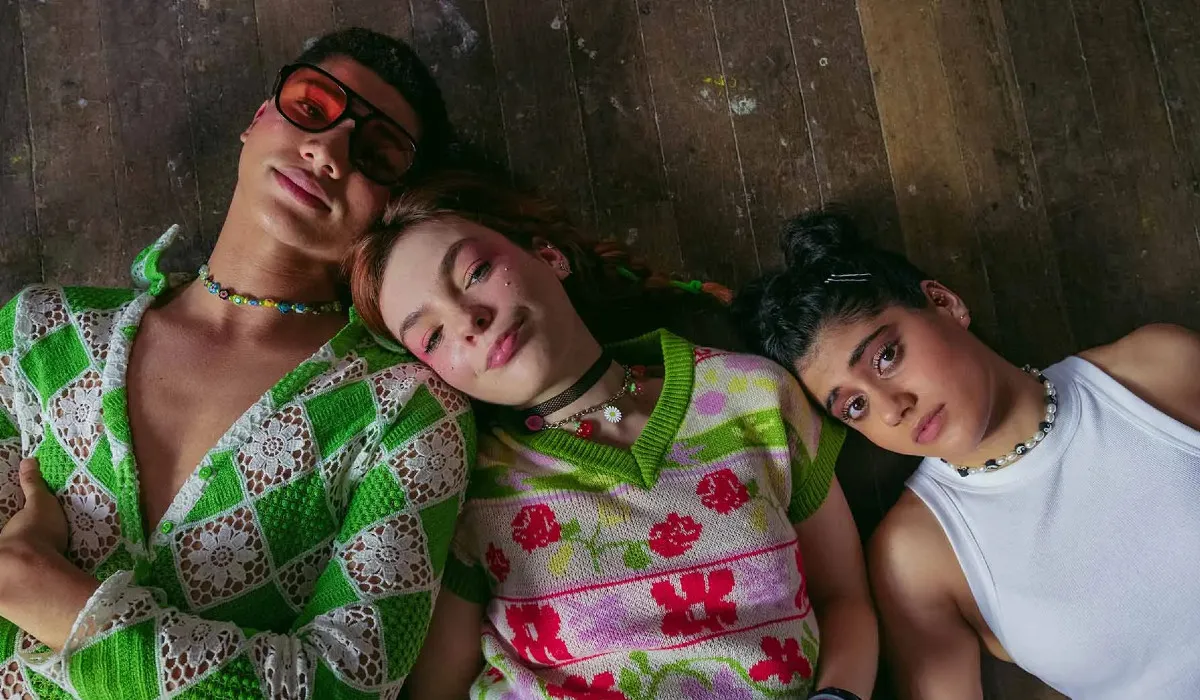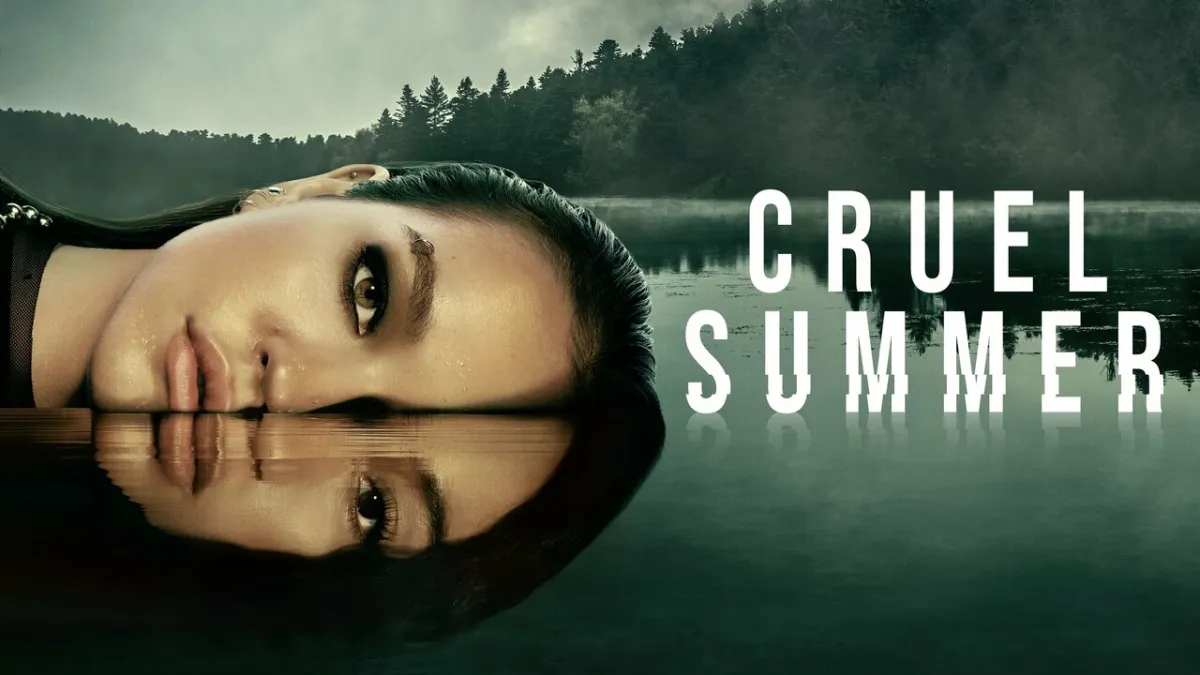“They said you were wrong for loving violence! They said you were wrong for loving sex! They said you were wrong for wanting more!” – Randall Flagg
The lights are dark and red, permeated by the occasional flash of a spotlight or a disco ball. Sweat rolls down the backs, chests, and arms of the people writhing and dancing with abandon. Bodies, mostly faceless, are adorned with fishnets, leather harnesses, and little else. Women wrap themselves around poles, or aerial hoops, or even each other. In the center is a gladiator pit filled with blood and carnage. Above the orgy, the watchful eye of a menacing Alexander Skarsgard sees all. But somehow, this isn’t Fangtasia, the seedy bar of 2008’s True Blood; it’s the world of “New Vegas” as interpreted by the 2020/21 adaptation of Stephen King’s The Stand on CBS All Access.
And that’s a problem.
To be fair, there are MANY problems with this adaptation of The Stand: the incoherent narrative structure, reducing some of King’s already problematic tropes (King loves to utilize “magical negroes” AND “magical disabled people”) into base caricatures, and Ezra Miller’s extremely offensive portrayal of “The Trashcan Man.” Now, we can add illustrating the “evil” of “New Vegas” by filling it with strippers, dominatrixes, and other sex workers, alongside gladiator pits full of bloody limbs and chainsaws, as yet another fundamental misunderstanding of its source material—and one that, at its heart, betrays a disconcertingly sex-negative and potentially homophobic worldview.
When Boulder spy Dayna Jurgens walks the casino floor for the first time, she is greeted by a writhing, chaotic display of people enthusiastically getting busy. Women are bedecked in glitter, feathers, harnesses, and g-strings. Men are equally flamboyant—often in the same exact attire as the women. In fact, there are several drag queens and other gender non-conforming folk grabbing a drink, laughing and cheering, and in general, living their best lives.
Men in chaps perform implied fellatio. Women kiss each other. Some light spanking happens in the background. It all feels very much like Cirque du Soleil’s “Zumanity”—the erotic circus show of 2003—and seems, honestly, like a pretty fun time. But Dayna’s eyes widen with dismay, and as the audience’s cipher in this world, we are meant to feel the same way.
And then, there is the murder pit. Sunken into the floor is a gladiator ring where the “New Vegas” slaves are forced to battle to the death. Blood splatters the walls, and the cleanup crew periodically hauls away corpses and severed limbs. Violence is at the core of “New Vegas,” and its citizens cheer just as lustily for the gore as they do for the strippers and go-go dancers, because for The Stand, sex and violence are inextricably intertwined into one sweaty ball of evil.
It seems to be saying that those who love sex, and especially non-heternormative sex, must also love violence, murder, and death. Or vice versa. These denizens of “New Vegas” are evil because they embrace their fantasies. After all, what could be more nefarious, more evil, than a man in a sequined thong, glitter eyeshadow, and a feather headdress. There must, it claims, also be murder in his heart.
In stark contrast is the “Boulder Free Zone,” the hub of our protagonists. Surrounded by frosty peaks, the world of Boulder is cold and ascetic. Everything is painted in shades of icy white, greens and blues. This land is cold—cold and pure as the snow that surrounds it. The residents are always fully bundled and extremely modest in their attire. Women are in thick sweaters or overalls; men wear hats and bulky coats. Everyone has on their big, rubber duck boots.
There is nary a decolletage in sight, and on the surface, this makes sense. People would dress this way in a cold mountain town, but this attire is paired with a repressive chasteness. The most physical affection on display is some hand holding or a kiss on the cheek. All of the couples in Boulder are heterosexual. Ray Bretner is a lesbian, but her partner died of the superflu and now she lives a celibate life devoted entirely to Mother Abagail.
The only sex scenes that take place are between our “married” heroes Stu and Fran. And Fran, heavily pregnant by a man the audience never meets, has already been established as the post-apocalyptic world equivalent of the Virgin Mary. The only other couple where sex acts are even hinted at are Harold and Nadine—our Judas and our Jezebel—the two working for Flagg to take down Boulder from the inside.
Where Vegas represents “evil” as “excess,” the indulgence of every physical desire, Boulder represents “good” as cold, austere purity. Vegas is “dirty” while Boulder is “clean.” The Stand declares that to indulge is sinful. To abstain? Divine.
This interpretation of what makes a person or place “good” or “evil” is even more concerning when considering the source material. In King’s novel, Flagg’s Vegas isn’t a decadent blood orgy fueled by drugs and alcohol but a strict authoritarian regime. In fact, one of Lloyd Henreid’s buddies is publicly crucified because he was caught using. Flagg banned all drug and alcohol consumption in his territory because he found it made people “inefficient.”
In King’s story, Boulder and Vegas represent “good” and “evil,” but they are also an allegory for democracy and fascism. What makes the people of Boulder “good” is that not that they are any kinder than the residents of Las Vegas but that they are struggling to create a free and fair democracy that will benefit all of its citizens.
What makes the majority of the people of Las Vegas “evil” isn’t murderous impulses or “deviant” sexual behavior. In fact, the book goes to great lengths to show the ways in which Lloyd Henreid pulls himself together, and that most of the other residents of Las Vegas are quite kind and polite to each other, but that they are willing to go along with Flagg’s brutal public executions and slave labor as long as it means that they have electricity and creature comforts. Essentially, Boulder represents the American “ideal” (quotes because, as we know, America has never actually achieved this! Certainly not lately!) and Vegas, Nazi Germany.
The argument of the book is that what makes a person good or bad is a matter of whether or not they value the lives of others, or only think of themselves. What dooms Harold and Nadine to betray Boulder in favor of Flagg is that both of them are unable to see outside of themselves.
Harold is consumed by his anger and petty grievances and can’t see that Stu, Fran, and Larry have been trying to welcome him as a friend. Nadine is lost in her lust for Flagg but also her own vanity. She waits until it’s too late to beg Larry for sex because she wants to prove to herself that she is so beautiful that she can take an already taken man.
Evil isn’t about id, as CBS’s The Stand claims; it’s about Ego. The residents of Vegas do their best to ignore the slaves and the brutality because they have electricity and because it’s not happening to them. As Burke’s famous line goes, “The only thing necessary for the triumph of evil is for good men to do nothing.”
That is, ultimately, why this adaptation of The Stand is so disheartening. It’s 2021. “WAP” is at the top of the pop charts. Marriage equality has been the law for over five years. Drag queens host children’s story hour events (or did, pre-pandemic) at local libraries. Knowledge of kink, BDSM, and other “alternative” lifestyles has permeated the mainstream and its discourse. Sex workers are struggling not to be erased from online platforms.
And so, The Stand’s depiction of all of these things as evil feels worryingly dated and out of step, especially considering the source material, published in 1978, contained none of this sex negativity or hidden homophobia. (Characters within the book are homophobic, but that’s a different subject altogether.) That leaves the troubling question of “Why?” Why have queerness and sex been relegated back to the side of “evil”? And if this is the first wave of a larger cultural backlash, how do we once again push forward?
(images: CBS All Access)
Want more stories like this? Become a subscriber and support the site!
—The Mary Sue has a strict comment policy that forbids, but is not limited to, personal insults toward anyone, hate speech, and trolling.—



